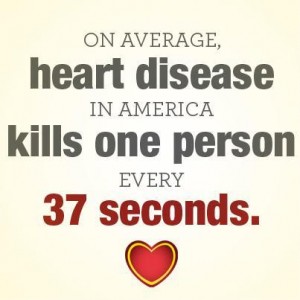Symptoms and Diagnosis of Heart Attack
Symptoms and Diagnosis of Heart Attack from American Heart Association
Symptoms of heart attack
If you are concerned that you may be experiencing a heart attack, call 9-1-1. Minutes matter! Learn the warning signs to familiarize yourself in case of an emergency.
Symptoms of heart disease which may lead to a heart attack
You may be experiencing cardiovascular problems if you notice that ordinary physical activity causes you to experience the following symptoms:
- Undue fatigue
- Palpitations — the sensation that your heart is skipping a beat or beating too rapidly
- Dyspnea — difficult or labored breathing

- Chest pain — chest pain or discomfort from increased activity
- Angina pectoris also called stable angina or chronic stable angina
- Unstable angina
Diagnosis: How do I know if a heart attack has occurred?
A healthcare provider can diagnose a heart attack based on several assessment findings. These include:
- the patient’s complete medical history.
- a physical examination.
- an electrocardiogram (ECG or EKG) to discover any abnormalities caused by damage to the heart. An ECG is a medical device that makes a graphical record of the heart’s electrical activity.
- blood testing to detect abnormal levels of certain enzymes in the bloodstream.
Blood tests confirm (or refute) suspicions raised in the early stages of evaluation that may occur in an emergency room, intensive care unit or urgent care setting. These tests are sometimes called heart damage markers or cardiac enzymes.
Heart attack: a signal of heart disease
Although you may have warning signs prior to a heart attack, the heart attack itself may be your first symptom of an underlying problem: cardiovascular disease such as coronary artery disease (CAD) which narrows and hardens your arteries around the heart or atherosclerosis which is often responsible for artery-blocking clots.
View an animation of a heart attack.
To diagnose the condition, heart attack patients may be asked to undergo a number of diagnostic tests and procedures. By learning what these tests are and why they’re being done, you’ll feel more confident. These tests are important and help the doctor determine if a heart attack occurred, how much your heart was damaged and also what degree of CAD you may have.
Diagnostic measures — “non-invasive” and “invasive”
The tests screen your heart and help the doctor determine what treatment and lifestyle changes will keep your heart healthy and prevent serious future medical events. There are “non-invasive” diagnotic tests and “invasive” diagnostic tests.
Likely procedures
If you’ve had a heart attack, you may have already had certain procedures to help you survive your heart attack and diagnose your condition.
- Thrombolysis: Many heart attack patients have undergone thrombolysis, a procedure that involves injecting a clot-dissolving agent to restore blood flow in a coronary artery. This procedure is administered within a few (usually three) hours of a heart attack.
- Coronary Angioplasty/ Coronary artery bypass graft surgery (CABG): If thrombolysis treatment isn’t done immediately after a heart attack, many patients will need to undergo coronary angioplasty or coronary artery bypass graft surgery (CABG) later to improve blood supply to the heart muscle.
Use the following At-A-Glance charts to gain a quick understanding of possible treatments that a heart attack patient may undergo.
- Cardiac Procedures and Surgeries At-A-Glance
- Implantable Medical Devices At-A-Glance
- Cardiac Medications At-A-Glance
See Diagnostic Tests and Procedures At-A-Glance to better understand the tests you may have to undergo to find out if you had a heart attack, how much damage was done and what degree of coronary artery disease (CAD) you have.
This content was last reviewed on 10/20/2012.


Leave a Reply